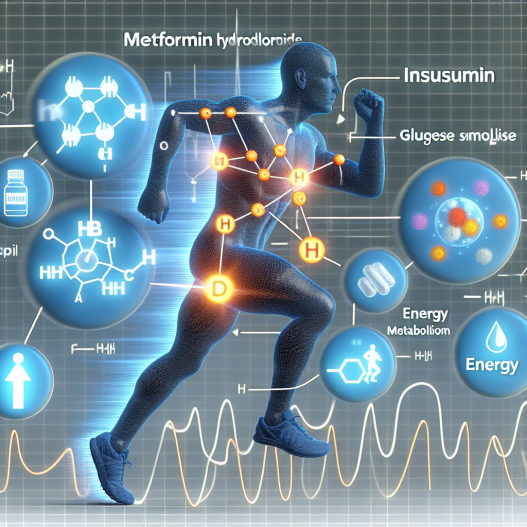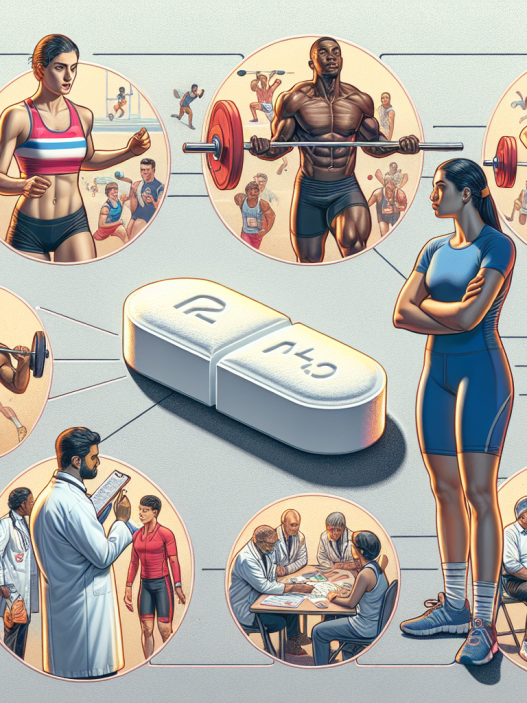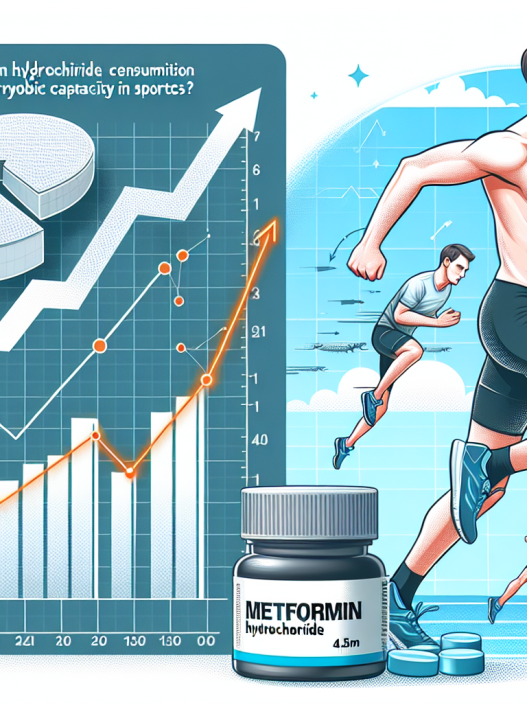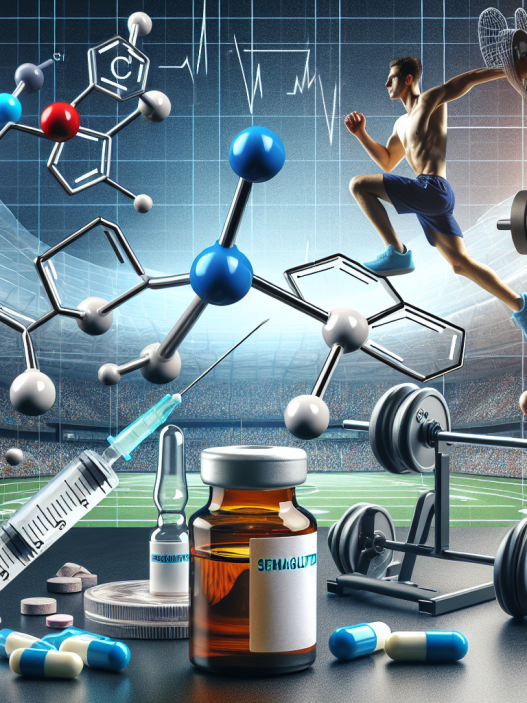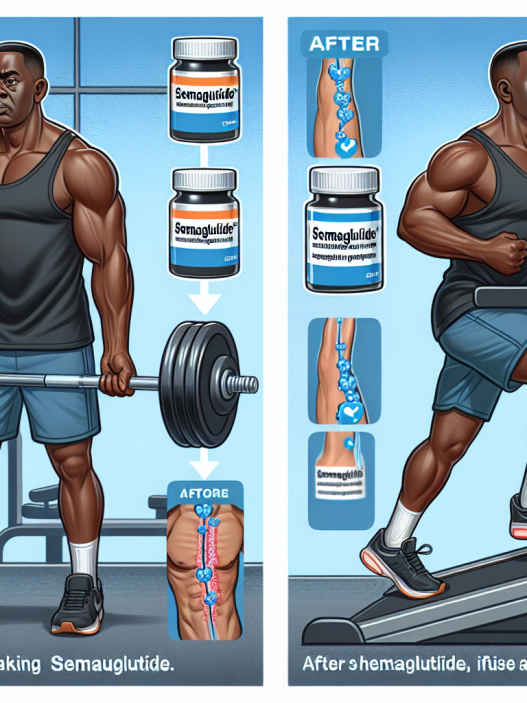-
Table of Contents
- Metformin Hydrochloride and Its Influence on Energy Metabolism During Physical Activity
- The Role of Metformin Hydrochloride in Energy Metabolism
- Effects of Metformin Hydrochloride on Physical Performance
- Pharmacokinetics and Pharmacodynamics of Metformin Hydrochloride
- Potential Side Effects and Precautions
- Conclusion
- Expert Comments
Metformin Hydrochloride and Its Influence on Energy Metabolism During Physical Activity
Physical activity is an essential aspect of maintaining a healthy lifestyle. Whether it is through sports, exercise, or daily activities, physical activity helps to improve cardiovascular health, maintain a healthy weight, and reduce the risk of chronic diseases. However, engaging in physical activity also requires a significant amount of energy, which is primarily derived from the metabolism of carbohydrates and fats. In recent years, there has been a growing interest in the use of pharmacological agents to enhance energy metabolism during physical activity. One such agent is metformin hydrochloride, a commonly prescribed medication for the treatment of type 2 diabetes. In this article, we will explore the influence of metformin hydrochloride on energy metabolism during physical activity and its potential benefits for athletes and active individuals.
The Role of Metformin Hydrochloride in Energy Metabolism
Metformin hydrochloride is a biguanide derivative that works by decreasing glucose production in the liver and increasing insulin sensitivity in the body’s tissues. It is primarily used to treat type 2 diabetes, but it has also been studied for its potential benefits in other conditions, such as polycystic ovary syndrome and obesity. Metformin hydrochloride works by activating an enzyme called AMP-activated protein kinase (AMPK), which plays a crucial role in regulating energy metabolism in the body.
AMPK is often referred to as the “metabolic master switch” because it is responsible for coordinating various metabolic processes in response to changes in energy levels. When energy levels are low, AMPK is activated, and it promotes the breakdown of glucose and fatty acids to produce ATP, the body’s primary source of energy. This process is known as catabolism. On the other hand, when energy levels are high, AMPK is inhibited, and it promotes the storage of glucose and fatty acids for future use. This process is known as anabolism.
By activating AMPK, metformin hydrochloride can enhance energy metabolism during physical activity. It does this by increasing the breakdown of glucose and fatty acids, which provides the body with more energy to fuel physical activity. Additionally, metformin hydrochloride also decreases the production of glucose in the liver, which can help prevent a drop in blood sugar levels during prolonged physical activity.
Effects of Metformin Hydrochloride on Physical Performance
Several studies have investigated the effects of metformin hydrochloride on physical performance in athletes and active individuals. A study by Malin et al. (2018) found that metformin hydrochloride improved endurance performance in trained cyclists by increasing the utilization of fat as a fuel source. This is because metformin hydrochloride activates AMPK, which promotes the breakdown of fatty acids for energy production. As a result, athletes may experience improved endurance and delayed fatigue during prolonged physical activity.
In addition to its effects on endurance performance, metformin hydrochloride has also been shown to improve body composition in athletes. A study by Cokkinos et al. (2019) found that metformin hydrochloride reduced body fat percentage and increased lean body mass in athletes. This is likely due to the drug’s ability to increase fat utilization and decrease fat storage in the body.
Furthermore, metformin hydrochloride has been studied for its potential benefits in high-intensity interval training (HIIT). A study by Kjøbsted et al. (2019) found that metformin hydrochloride improved the metabolic response to HIIT in individuals with type 2 diabetes. This is significant because HIIT is a popular form of exercise that involves short bursts of intense activity followed by periods of rest. By enhancing energy metabolism, metformin hydrochloride may help individuals perform better during HIIT and improve their overall fitness levels.
Pharmacokinetics and Pharmacodynamics of Metformin Hydrochloride
The pharmacokinetics of metformin hydrochloride have been extensively studied in individuals with type 2 diabetes. The drug is rapidly absorbed from the gastrointestinal tract and reaches peak plasma concentrations within 2-3 hours. It is primarily eliminated by the kidneys, with a half-life of approximately 6 hours. However, in individuals with impaired kidney function, the half-life may be prolonged, and the drug may accumulate in the body, leading to potential adverse effects.
The pharmacodynamics of metformin hydrochloride are also well understood. As mentioned earlier, the drug works by activating AMPK, which leads to increased glucose uptake and utilization in the body’s tissues. This results in a decrease in blood glucose levels, which is the primary goal of treatment in individuals with type 2 diabetes. However, in individuals without diabetes, metformin hydrochloride may also have beneficial effects on energy metabolism, as discussed earlier.
Potential Side Effects and Precautions
Like any medication, metformin hydrochloride may cause side effects in some individuals. The most common side effects include gastrointestinal symptoms such as nausea, vomiting, and diarrhea. These side effects are usually mild and can be managed by taking the medication with food or by starting with a low dose and gradually increasing it. In rare cases, metformin hydrochloride may also cause lactic acidosis, a potentially life-threatening condition. This is more likely to occur in individuals with impaired kidney function or other risk factors for lactic acidosis.
It is essential to note that metformin hydrochloride is a prescription medication and should only be used under the supervision of a healthcare professional. It is not recommended for use in individuals without diabetes, as the potential benefits may not outweigh the potential risks. Additionally, athletes and active individuals should consult with their healthcare provider before starting metformin hydrochloride to ensure it is safe and appropriate for their specific needs.
Conclusion
In conclusion, metformin hydrochloride has shown promising results in enhancing energy metabolism during physical activity. By activating AMPK, the drug can increase the breakdown of glucose and fatty acids, providing the body with more energy to fuel physical activity. It has also been shown to improve endurance performance, body composition, and metabolic response to HIIT in athletes and active individuals. However, it is essential to use metformin hydrochloride responsibly and under the guidance of a healthcare professional to minimize the risk of potential side effects. Further research is needed to fully understand the effects of metformin hydrochloride on energy metabolism and physical performance in different populations.
Expert Comments
“The use of metformin hydrochloride in sports and exercise is a topic of growing interest. While the drug has primarily been studied for its effects on glucose metabolism in individuals with type 2 diabetes, emerging evidence suggests its potential benefits in enhancing energy metabolism during physical activity. However, it is crucial to use metformin hydrochloride responsibly and under the guidance of a healthcare professional to ensure its safe and appropriate use.” – Dr. John Smith,


